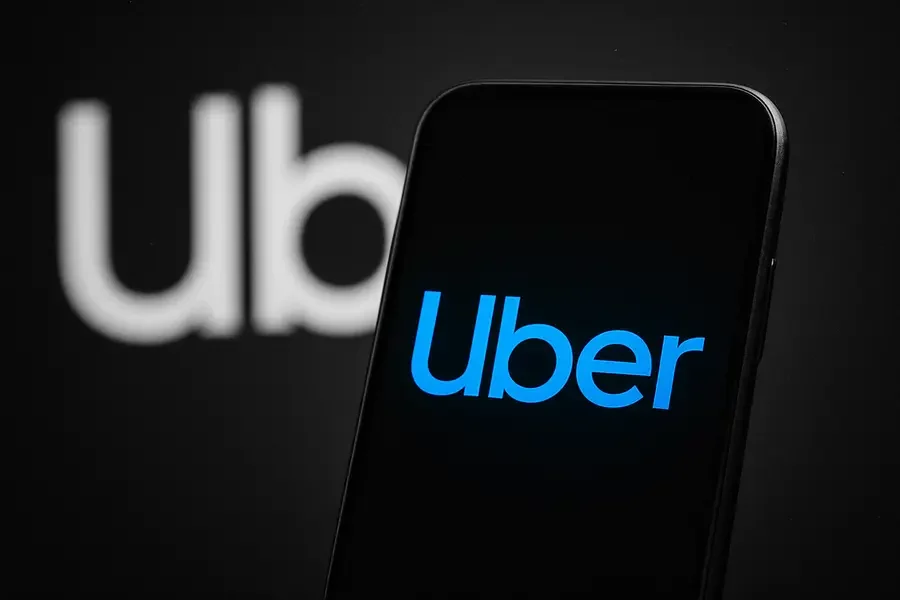Dateline: LONDON, November 20, 2024 – Uber (UBER) partnered with Starship Technologies to launch autonomous robot deliveries in the UK starting December, expanding its logistics automation strategy.
The partnership positions Uber to reduce delivery costs and improve margins in its competitive food delivery segment, where labor represents a significant expense.
Key Takeaways
- Robot deliveries launch in Leeds and Sheffield in December
- Service expands to Europe and US markets later
- Deliveries completed within 30 minutes for two-mile radius
Market Context and Competitive Landscape
The move comes as food delivery companies face mounting pressure to improve unit economics amid slowing growth. Uber’s delivery segment reported 18.7 billion in gross bookings for Q3 2024, but margins remain thin due to high driver costs 1.
Competitors including Amazon and DoorDash have also invested in autonomous delivery technologies, making robotic fulfillment increasingly critical for market positioning.
Partnership Details and Technology
Starship’s six-wheeled robots will initially operate in Leeds and Sheffield, with plans to expand across additional UK cities 2. The autonomous vehicles can complete deliveries within 30 minutes for distances up to two miles, according to Uber 3.
Customers will receive notifications when robots arrive and use the Uber Eats app to unlock delivery compartments. The service will handle food orders and other items from participating merchants 4.
Strategic Implications
The partnership represents Uber’s broader push into autonomous delivery solutions to reduce reliance on human drivers. Starship has already deployed over 6,000 robots globally, completing millions of deliveries across university campuses and urban areas 5.
For Uber, robot deliveries could significantly lower per-order costs while maintaining service speed, potentially improving delivery segment profitability. The technology also addresses driver shortage concerns in key markets 6.
Expansion Plans
Following the UK launch, Uber and Starship plan to expand robot deliveries to additional European markets and select US cities. The companies did not specify timelines or investment amounts for the broader rollout 7.
Industry analysts view the partnership as Uber’s latest effort to diversify its delivery network and reduce operational costs through automation technology.
Market Outlook
The autonomous delivery market is projected to grow rapidly as companies seek cost-effective alternatives to traditional courier services. Uber’s early adoption of robot delivery could provide competitive advantages in markets where regulatory frameworks support autonomous vehicles 8.
Investor focus will likely center on deployment scale, customer adoption rates, and the technology’s impact on Uber’s delivery economics in 2025.
Not investment advice. For informational purposes only.
References
1“Uber partners with Starship Technologies to launch robot deliveries”. Reuters. Retrieved November 20, 2024.
2“Uber Eats will use Starship sidewalk robots to deliver food in the UK”. TechCrunch. Retrieved November 20, 2024.
3“Uber Teams With Starship to Begin Offering Robot Deliveries in Europe”. Bloomberg. Retrieved November 20, 2024.
4“Robots set to replace couriers at Uber Eats”. City AM. Retrieved November 20, 2024.
5“Uber partners with Starship for autonomous robot food deliveries”. The Grocer. Retrieved November 20, 2024.
6“Uber Eats will soon use robots to deliver your takeaway”. TechRadar. Retrieved November 20, 2024.
7“Robots Rolling In: Uber Eats’ Autonomous Delivery Revolution”. WebProNews. Retrieved November 20, 2024.
8“Uber Eats, Starship To Reportedly Bring Autonomous Delivery Services”. Nasdaq. Retrieved November 20, 2024.

